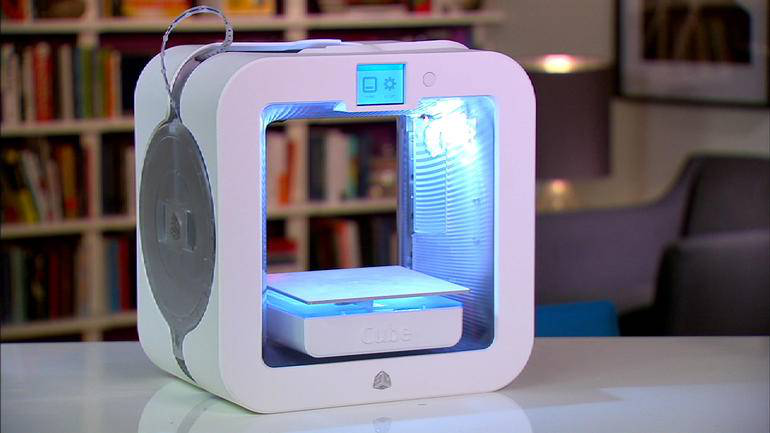Free 3d printer slicers
What Is the Best 3D Printer Slicer in 2022?
The process of 3D printing comprises three essential components: the 3D printer, the 3D model, and the slicing software for 3D printing. If you're new to 3D printing, a 3D printer slicer, or slicer, is software that acts as the middleman between the 3D printer and the 3D model.
3D printer slicers convert 3D models (like STL) into a format (like G-code) that 3D printers understand and can trace to create a print. The G-code file contains a set of instructions that tell the 3D printer what to do and how to do it.
This article covers some of the best 3D printer slicer software. But first, let's look at the characteristics of a good slicer.
What Are the Qualities of Good 3D Printer Slicer Software?
To be considered great, there are some features an industry-standard slicer should have. Here are the main variables to consider when searching for the best 3D slicer.
1. Ease of Use
There's no point in having great and advanced features if no one can find and use them. An ideal slicer should have a user-friendly interface and straightforward guides.
2. Preview
A good slicer should provide estimates on the printing time, how much material is needed, and how much is left. The estimations should be as accurate as possible.
3. STL Import Speed
You don't want to waste time waiting for your 3D printer files to display. Any good 3D slicer should quickly import STL files (or any other 3D printer model), no matter the size or complexity of the files.
4. STL Repairing
If your file has errors that could affect the print, a good 3D slicer software will alert you and fix them if necessary. This helps prevent wasteful reprints.
5. Slicer Supports
A good slicer should automatically generate supports. This will ensure that your final print is more precise and accurate, especially over wide-angle printing.
6. Cost
There are many great free programs, so if the 3D printer slicer is paid, it should offer significant advantages over the free options.
The Best 3D Printing Slicer Software
There are many slicing software, some with unique features and others compatible only with specific platforms. To help you choose the right software, here's a list of the top 3D printer slicer software, both free and paid.
1. Cura
Cura is a free and popular open-source slicer and is our top choice for the best 3D printer slicer. The software was developed by Ultimaker and was meant for use with their 3D printers.
The 3D slicer suits all users, from beginners to expert users in various industries. It's easy to use, has a fast graphical user interface, and gets frequent updates for a better user experience. It also has a huge resource library and a large active user community.
Cura supports various 3D printers and is compatible with computers running on macOS, Windows, and Linux. It also integrates with several plugins to enhance your workflow and CAD software like Autodesk Inventor and SolidWorks.
The software works with file formats like STL, OBJ, X3D, and 3MF, showing a tool path, estimated printing time, and material usage. It also works with many image formats, including JPG, PNG, GIF, and BMP.
Download: Cura for Windows, Mac, and Linux (Free)
2. ideaMaker
ideaMaker is another free 3D printing slicer, often preferred for its versatility and user-friendliness. The software was developed by Raise 3D, primarily for their lineup of 3D printers, but it's also compatible with most FDM 3D printers.
The slicer has a simple interface and a smooth editing process and is a great choice for beginners and intermediate users looking for a straightforward slicer. ideaMaker is relatively fast and requires a few clicks to prepare your STL, 3MF, or OBJ files for print.
ideaMaker allows you to remotely monitor and control the printer and track multiple printing profiles. The software also includes features like auto-layout for multiple files, automatic support generation, and repair for faulty models.
Download: ideaMaker for Windows, Mac, and Linux (Free)
3. Simplify3D
Simplify3D is powerful 3D slicer software with easy-to-use advanced features. The software is suitable for experienced users who need a 3D slicer for high-quality printing.
The slicer works with almost all 3D printers and is compatible with Windows, macOS, and Linux. With Simplify3D, you can import, edit, and repair 3D models. You can also import OBJ, 3MF, or STL files very fast.
Simplify3D enables you to easily switch between multiple machines and monitor several printing processes at once. You also can access great pre-print simulations that allow you to pinpoint errors for fixing.
There are many printer settings to give you maximum control of the printing process. You can customize settings for extruders, infill 3D settings, temperature and cooling, and layer control. You can edit raw G-codes as well.
Simplify3D has many tutorials and a great support community.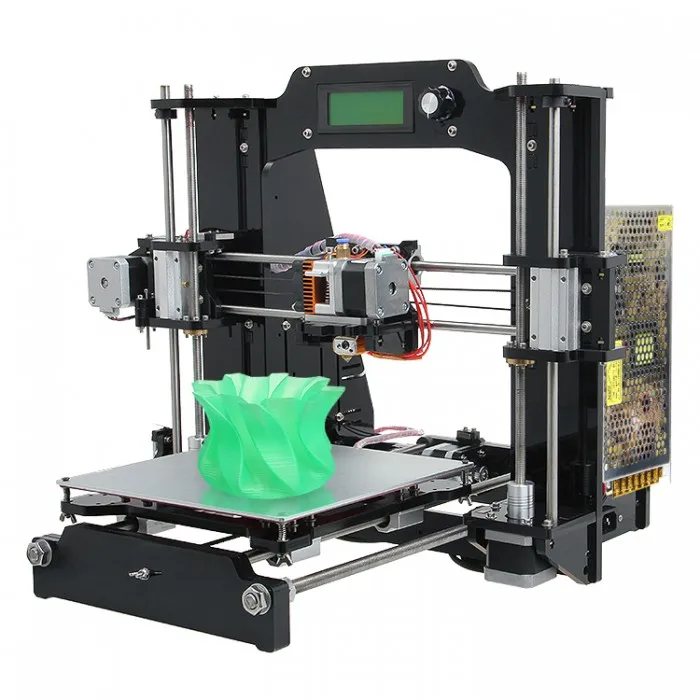 The software costs a one-time payment fee of $149. You'll, however, need to pay some fee for upgrades.
The software costs a one-time payment fee of $149. You'll, however, need to pay some fee for upgrades.
Download: Simplify3D for Windows, Mac, and Linux (Subscription required; free trial available)
4. Slic3r
Slic3r is an open-source 3D printer slicer best known for its unique and cutting-edge features updated now and then. The software has many advanced features, making it suitable for experts looking for a free 3D slicer.
The software is compatible with many 3D printers, including Ultimaker, Makerbot, and MakerGear. It also works with files like OBJ and STL to quickly generate G-code.
Slic3r has a wide range of intuitive features for editing 3D models in real-time. Its features include bridge detection, micro layering, honeycomb infill, command line slicing, mesh cutting, and sequential printing.
Download: Slic3r for Windows, Mac, and Linux (Free)
5. Netfabb
Autodesk-owned Netfabb is an advanced 3D slicing software and is easily the best paid 3D slicer for professionals. The software is popular with automotive, aerospace, and heavy industry engineers.
The software is popular with automotive, aerospace, and heavy industry engineers.
The 3D slicer includes Fusion 360, and we've put together our top tips for Fusion 360 beginners if you're new to this.
Netfabb also integrates with several 3D printers, including Aconity3D, Mimaki, and EOS. The software allows you to apply additive manufacturing to a part of or entire model.
Additive manufacturing allows you to manufacture unique components, like lightweight lattice structures. You can, for example, create hollow products, thus saving on weight.
Netfabb includes features that allow you to analyze, repair, and edit STL files before slicing. One notable feature is the simulation toolkit designed to ensure components print correctly and perform as expected. The simulation tools, for instance, can predict how metal additive manufacturing parts will warp, helping reduce build failures.
With the software, you can import models from various CAD systems and quickly analyze files for printability, estimated material usage, print time, and possible cost. If errors are detected, you can use the software's repair tools to fix them.
If errors are detected, you can use the software's repair tools to fix them.
Note that Netfabb comes in several licensing options: Standard, Premium, Ultimate, and Simulation, each with its unique features. The annual price is $230 for Standard and $4,635 for Premium.
Download: Netfabb Premium for Windows (From $230; free trial available)
Create Great Printables With the Best 3D Slicer Software
Slicers are among the most important tools in 3D printing. Using the right 3D slicer software can significantly improve the quality of your 3D output.
But with so many slicers in use, it can be hard to know which one best fits your needs. This article covers some of the top 3D printing slicer software. Hopefully, it will help you find the right match for your printing needs.
Open source 3D printing toolbox
What is Slic3r?
Features
Compatible with your printer too. RepRap (Prusa Mendel, MendelMax, Huxley, Tantillus. ..), Ultimaker, Makerbot, Lulzbot AO-100, TAZ, MakerGear M2, Rostock, Mach4, Bukobot and lots more. And even DLP printers.
..), Ultimaker, Makerbot, Lulzbot AO-100, TAZ, MakerGear M2, Rostock, Mach4, Bukobot and lots more. And even DLP printers.
Fast G-code generation is fast. Don't wait hours for slicing that detailed model. Slic3r is about 100x faster than Skeinforge. It also uses multithreading for parallel computation.
Lots of input/output formats. Slic3r reads STL, AMF and OBJ files while it can output G-code and SVG files.
Do you like the graphical interface or command line? All the features of the user-friendly interface are also available from command line. This allows to integrate Slic3r in your custom toolchain and batch operations as you like.
Open source, open development. Slic3r is open source software, licenced under the AGPLv3 license. The development is centered on GitHub and the #slic3r IRC channel on FreeNode, where the community is highly involved in testing and providing ideas and feedback.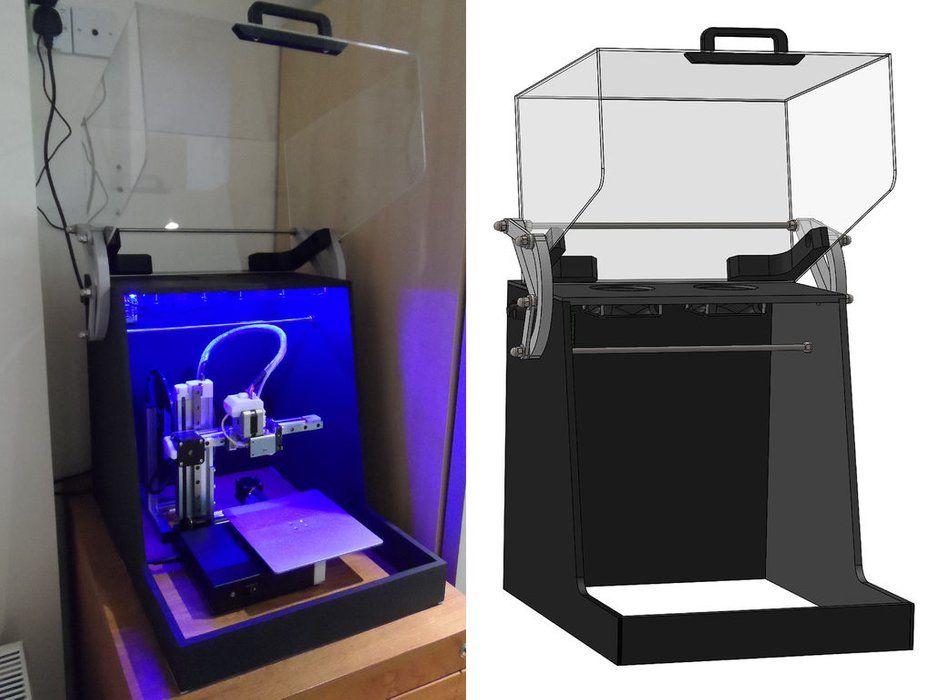
Dependencies? Nah. Slic3r is super-easy to run: download, double click and enjoy. No dependencies needed. Hassle-free. For MacOS X, Windows, Linux.
Print with dual multiple extruders. Print beautiful colored objects, or use your secondary extruder to build support material. Or put a larger nozzle on it and print a faster infill.
Use brim for the best adhesion. This unique feature improves built plate adhesion by generating a base flange around your objects that you can easily remove after printing.
Microlayering: save time, increase accuracy. You can choose to print a thicker infill to benefit from low layer heights on perimeters and still keep your print time within a reasonable amount.
Compose a plate but print one object at time. Use the built-in plating interface that allows to place objects with drag-and-drop, rotate and scale them, arrange everything as you like.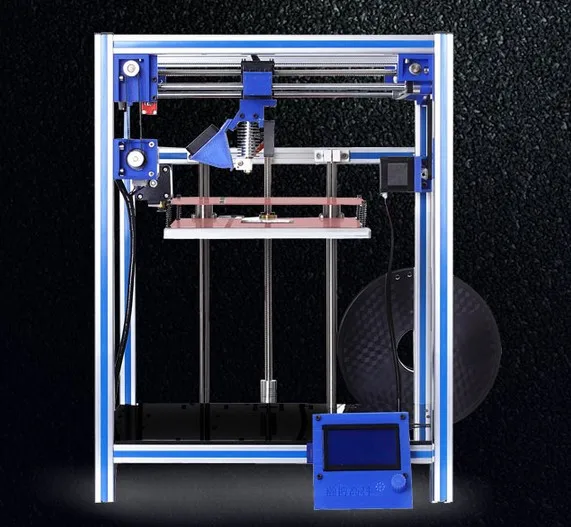 The sequential printing feature allows to print one complete object at time in a single print job.
The sequential printing feature allows to print one complete object at time in a single print job.
Cool cooling strategies. A very smart cooling logic will regulate your fan speed and print speed to ensure each layer has enough time to cool down before next one is laid on it.
Manage multiple printers, filaments and build styles. The configuration handling system was designed for people working with multiple machines and filaments: you can save configurations as presets for each category avoiding to multiply your saved configurations.
Enjoy support material. Automatic generation of support material for overhangs.
Gallery
Links
The RepRap Project
Read Article - Top Best Free 3D Printing Slicer Software in 2022
Below is a list of the best free 3D slicers in 2022 - software for converting 3D models into layers for 3D printing.
Cura
Cura is an open source slicing software created by Ultimaker for their 3D printers, but can also be considered a common standard as it is compatible with most other 3D printers. Its functionality can be easily extended with a large number of convenient plugins. Since this is one of the most popular and widely used 3D printer slicers on the market, there's a good chance that a profile for your 3D printer is already available in the software, allowing you to get started right away. If this is not the case, you can download and import a third party profile.
This 3D printing software is very easy to use and allows you to manage the most important 3D printing settings in a clear interface. Start with "Basic" mode for a quick start, where you can only reconfigure the most basic printer settings. If you need finer control over your print settings, switch to Advanced, Expert, or All for more settings. In these modes, Cura provides users with up to 400 customization options to suit your needs and get the best results.
This slicer is constantly updated and improved, new versions are constantly released, so you can be sure that you get the latest program. Recently, the new version of Cura 5.1 introduced settings for FDM metal printing.
You can also use Cura as a 3D printer remote control software, but the 3D printer must be connected to the PC during printing. Integration with CAD systems such as SolidWorks and Siemens NX makes the software valuable even in professional applications. But for the vast majority of home users, Cura is a simple and affordable 3D printing slicer.
In addition to ease of use, you can also find many educational resources on how to best use Cura's latest features, as well as a community forum on the Ultimaker website.
Cure download link.
Prusa Slicer
Prusa Research, the company behind the original Prusa 3D printers, has developed its own slicer, PrusaSlicer, based on Slic3r, an open source slicer. PrusaSlicer has gained a lot of popularity very quickly for a number of reasons: not only does it have a large list of Slic3r's adjustable settings, but it also has some handy features that the original software didn't have.
PrusaSlicer has gained a lot of popularity very quickly for a number of reasons: not only does it have a large list of Slic3r's adjustable settings, but it also has some handy features that the original software didn't have.
With a redesigned interface, built-in support for Prusa's own range of printers, and user-friendly settings for a range of common media, there are many improvements over the original software. Key features include customizable supports, support printing with different materials, and flexible layer height settings.
PrusaSlicer can be used to cut models for both FDM printers and photopolymer 3D printers. It has various modes allowing you to edit the settings depending on your experience, and the Expert mode opens up a huge list of customization possibilities. However, even simple profiles can work well in PrusaSlicer. There are fewer printer presets than some other popular slicers, but it's just as easy to set up or import custom settings.
Based on Slic3r, PrusaSlicer supports most of the original features and even accepts Slic3r configuration packages when importing profiles.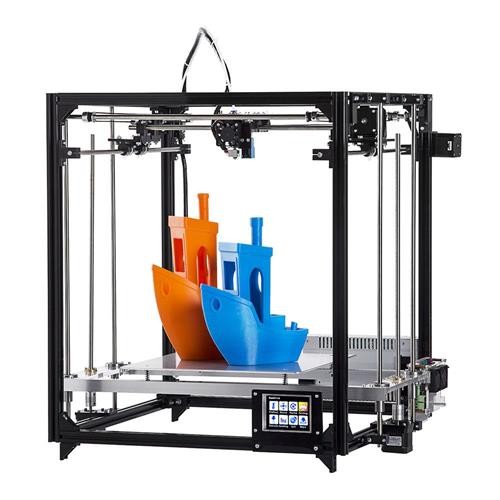
Link to download Prusa Slicer.
ideaMaker
Raise3D ideaMaker slicing software is optimized for the company's 3D printers, similar to how PrusaSlicer is optimized for original Prusa printers and Ultimaker Cura for Ultimaker hardware, but like other software, it also works well with third-party 3D printers.
The workflow and user interface is a bit more complex than Cura and PrusaSlicer, but it's worth a little digging and you'll have quick access to advanced per-layer settings and print modifiers, including the ability to texture models or brand your parts.
By connecting to Raise3D cloud services, you can download hundreds of community and Raise3D-created printer and media profiles for faster and better printing, or create your own library of settings and profiles.
Customizable supports, model splicing and mesh correction tools are all provided by ideaMaker, which allows you to get consistent print results every time.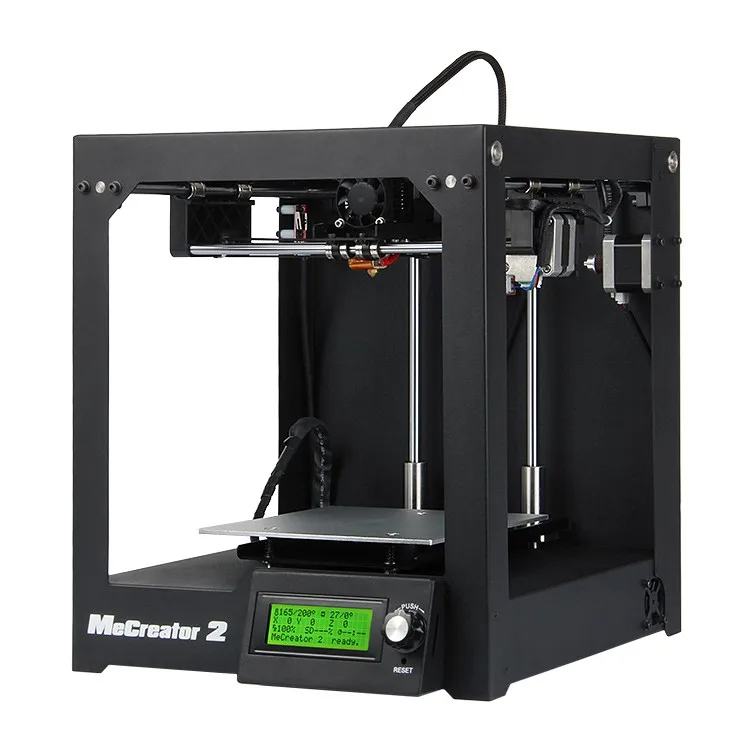 Print sequencing and built-in compatibility with OctoPrint are also additional features that improve print quality.
Print sequencing and built-in compatibility with OctoPrint are also additional features that improve print quality.
You can also switch between dark and light ideaMaker interface themes for a more comfortable slicer experience.
Download link for ideaMaker.
CHITUBOX Basic
Chances are if you're using a budget desktop 3D resin printer, it comes with CHITUBOX (now known as CHITUBOX Basic). The software is developed by CTB Systems, which also makes many of the motherboards and firmware for these printers (hence the company's default software is software that goes great with anything).
The main purpose of CHITUBOX Basic is cutting 3D models for printing on photopolymer 3D printers. With CHITUBOX Basic you get full control over printer settings as well as a large list of common and popular printer profiles and resins.
The most important element of preparation for photopolymer 3D printing is the orientation of the model and the setting of supports.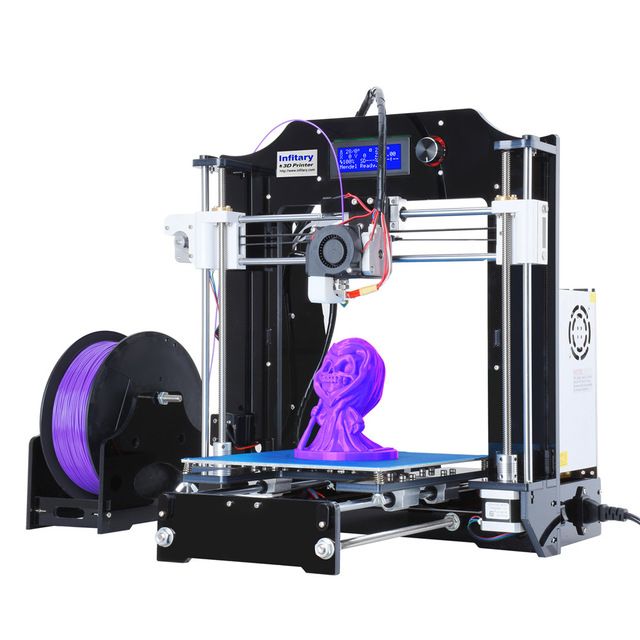 Orientation is not the easiest - it does not have an automatic mode, but the generation of automatic support is quite reliable and in many cases gives good results. More fine-tuning may be required to properly support parts, but the support customization options are simple and intuitive.
Orientation is not the easiest - it does not have an automatic mode, but the generation of automatic support is quite reliable and in many cases gives good results. More fine-tuning may be required to properly support parts, but the support customization options are simple and intuitive.
Link to download CHITUBOX Basic.
Lychee Slicer
With a wide variety of 3D printer profiles and resins, the Lychee Slicer is an attractive third-party option for your model slicing needs. This, and being one of the most user-friendly and easy-to-use slicers, makes the Lychee Slicer an excellent multifunctional solution for desktop resin printers.
Automatic model orientation will help you get started preparing for 3D printing, but you can skip it and just hit the Magic button and let Lychee Slicer take care of everything. The results can sometimes be unpredictable, but when working with simple models, you will save time this way.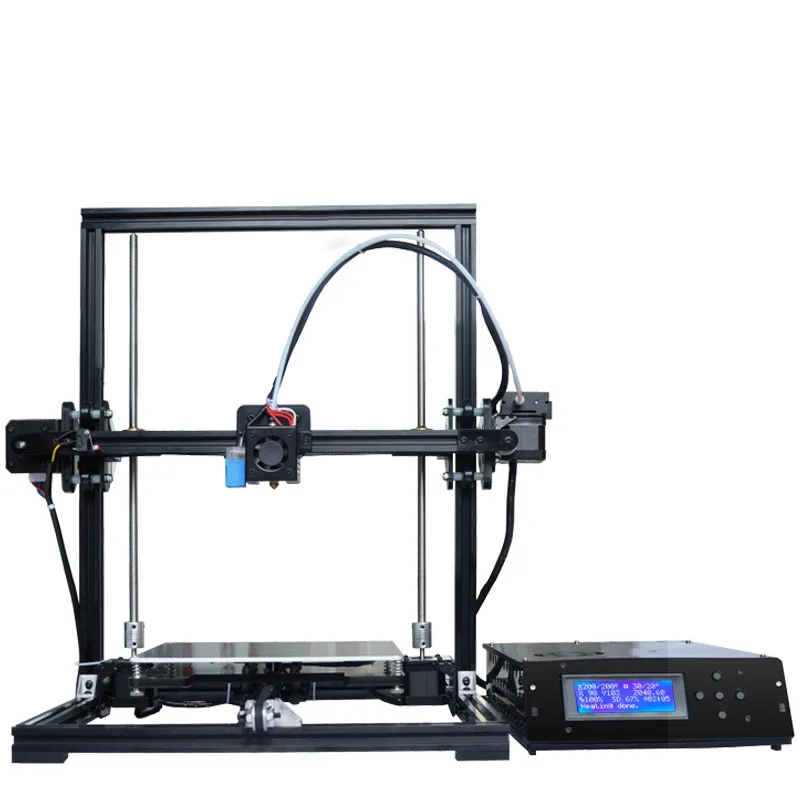
Some options are not available in the free version of Lychee Slicer, but this is not a problem. The free version is fully functional and has rich functionality.
Link to download Lychee Slicer.
Kiri:Moto
Written entirely to run in the browser, Kiri:Moto is a powerful tool that can be used to prepare models for 3D printing, laser engraving or CNC milling (the common factor here is that they are all exported via G-code) . The settings are simpler than locally installed slicers, but they provide most of what you would normally need, including z-axis retract settings.
There is complete freedom to add printers using a few simple parameters such as build area, G-code type, and number of extruders. In addition, there are necessary options for customizing and exporting G-code files.
Link to Kiri:Moto.
IceSL
IceSL is an amazing 3D printing software. This is not just a slicer, but also a 3D modeling tool. In the left window, you can edit your model directly using scripts in a language based on Lua.
In the left window, you can edit your model directly using scripts in a language based on Lua.
On the right you will find a wide range of slicing settings. Beginner-friendly presets make cutting a model quick and easy. But once you open the advanced settings, you get a lot of cool features that the IceSL team has been developing over the years.
Most notable from the latest release are the progressive settings, which allow you to specify different print settings for different layers, with IceSL making incremental changes on its own. This means smooth transitions from high to low fill and from low to high, among other things.
Link to download IceSL.
Read more about 3D printing and its application in different areas in our blog, and also subscribe to our social networks.
Top 20 Free 3D Printing & 3D Printing Software
Looking for 3D printing software? We've rounded up the top 20 software tools for beginners and professionals alike.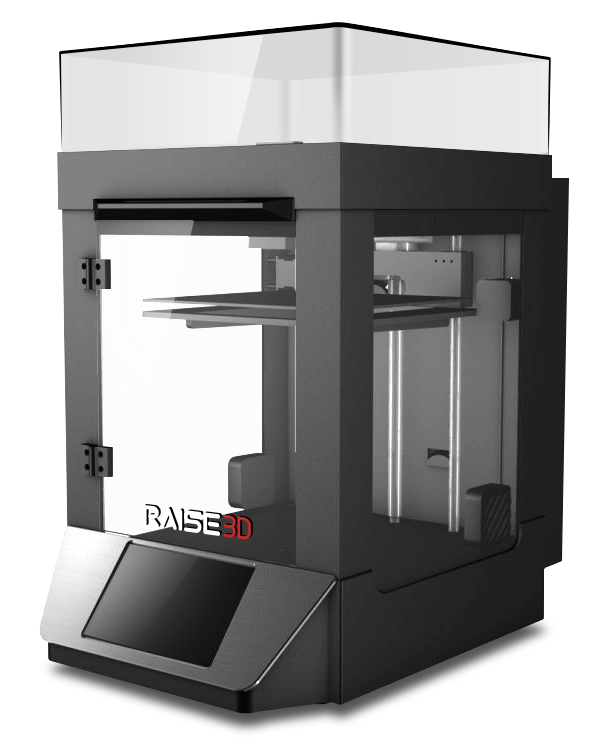 Most slicers are free.
Most slicers are free.
What is a slicer? This is a program for preparing a digital model for printing. Models for 3D printing are usually distributed in STL files. To turn an STL file into G-code (a language that a 3D printer understands), a slicer program is required. It is called a slicer because it cuts (to slice - English) a 3D model into many flat two-dimensional layers, from which a 3D printer will add a physical object.
Which slicer should I choose? In this article, we will tell you which slicer is best for 3D printing for each stage of your work. Which one is better for preparing a 3D model for printing? But what if you need to create a 3D model from scratch? And if you are only taking the first steps in 3D?
Don't be afraid: we've answered all of these questions, including the required skill level for each program and where you can download it. The great thing is that most of these programs are completely free and open source.
- Cura
- CraftWare
- 123D Catch
- 3D Slash
- TinkerCAD
- 3DTin
- Sculptris
- ViewSTL
- Netfabb Basic
- Repetier
- FreeCAD
- SketchUp
- 3D Tool
- Meshfix
- Simplify3D
- Slic3r
- Blender
- MeshLab
- Meshmixer
- OctoPrint
#1: Cura
For beginners who need a slicer to prepare STL files for 3D printing
Cura is the default slicer software for all Ultimaker 3D printers, but can be used with most others , including RepRap, Makerbot, Printrbot, Lulzbot and Witbox. The program is completely open source, its capabilities can be extended using plugins.
This program is very easy to use and allows you to manage the most important 3D printing settings through a clear interface. Start in Basic mode to quickly get up to speed and change print quality settings.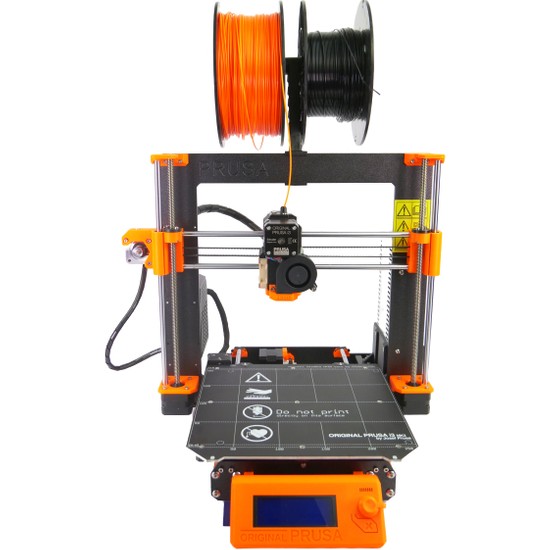 If finer control is required, switch to Expert mode.
If finer control is required, switch to Expert mode.
Cura can also be used to directly control the printer, but then the printer and computer must be connected to each other.
Download: Cura
Price: Free
Systems: PC, Mac, Linux
#2: CraftWare
For beginners to prepare STL files for 3D printing 3D printers by the Hungarian startup CraftUnique to support their CraftBot crowdfunding machine. However, the program works with other printers.
Like Cura, CraftWare allows you to switch from "Easy" to "Expert" mode, depending on how confident you feel. It's a colorful app that features a visual G-code visualization with each function represented by a different color. But the most outstanding feature is the individual support service. As far as we know, only the paid program Simplify3D has this.
Please note, however, that this program is still in beta, so bugs may occur.
Download: CraftWare
Price: Free
Systems: PC, Mac
#3: 123D Catch
-systems, smartphones and tablets, which allows you to convert images of objects into a 3D model. Pictures can be taken with a smartphone/tablet or digital camera.
Pictures can be taken with a smartphone/tablet or digital camera.
You need many photos of the object from different angles - the more the better - after which they will be compiled into a 3D model.
123D Catch is more of a fun app than a professional 3D printing tool, but after some tambourine dancing, you can get good results, especially when paired with an STL editor like MeshLab or Meshmixer.
Price: Free
Systems: PC, Android, iOS, Windows Phone
#4: 3D Slash
and surprisingly simple, and refreshingly new. With 3D Slash, you can design 3D models using your dice skills.
You can start with a large block and, like a virtual sculptor, remove small cups from it with tools such as a hammer or drill, or start from empty space and build a model from cubes and other shapes. You can paint with flowers or use template pictures.
Other features worth mentioning are tools for creating logos and 3D text. The Logo Wizard imports an image and creates a 3D model, while the Text Wizard allows you to enter and format text, and then turn it into 3D.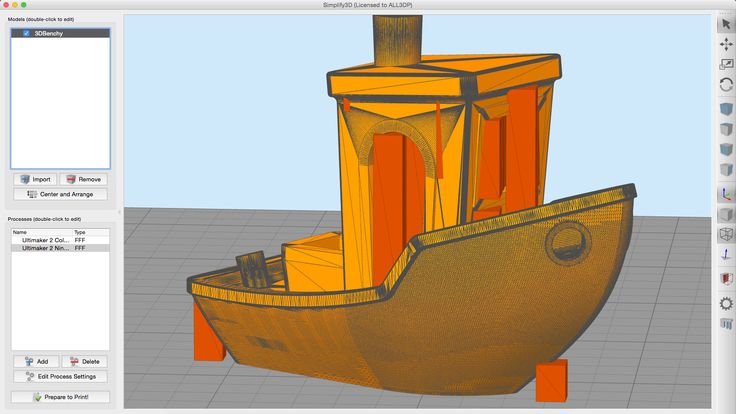
Recommended!
Download: 3dslash.net
Price: Free
Systems: PC, Mac, Linux, Browser
#5: TinkerCAD
- A computer-aided design (CAD) system for 3D printing, which is a good starting point for beginners. Since its capabilities are limited compared to Blender, FreeCAD and SketchUp, many users switch to more powerful tools after some time.
As in 3D Slash, here you can build models from basic shapes. At the same time, unlike 3D Slash, TinkerCAD allows you to create vector shapes in 2D and convert them into three-dimensional models.
Come in: Autodesk TinkerCAD
Price: Free
Systems: Browser
#6: 3DTin
For beginners who want to create 3D printable models
another easy and intuitive online tool choice for beginners in 3D modeling. All you need is a Chrome or Firefox browser with WebGL enabled.
Choose from a huge library of 3D shapes and add them to your sketch.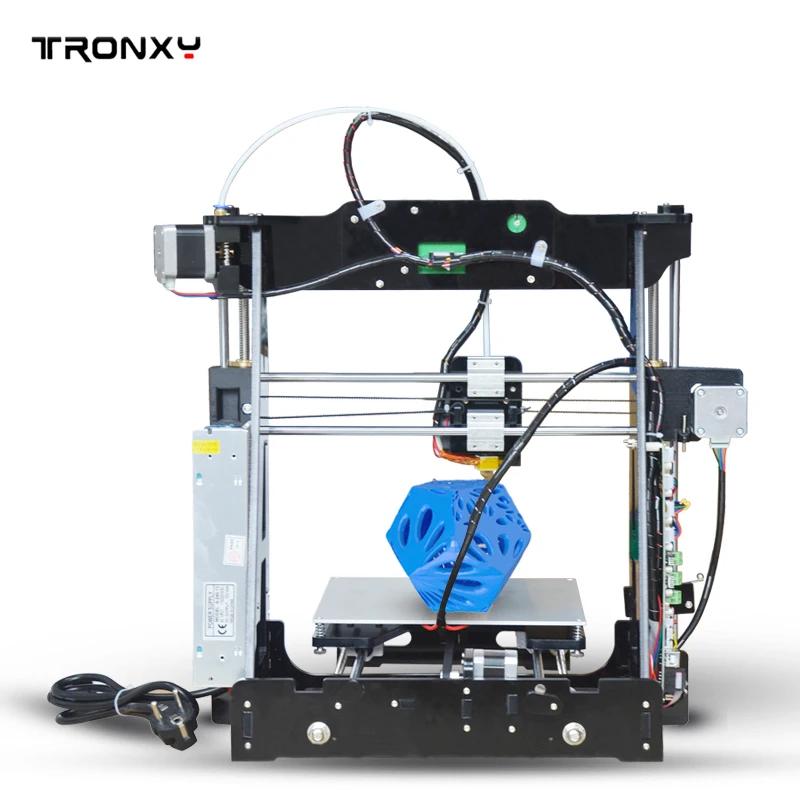 All sketches are stored in the cloud, access to them is free if you honor the Creative Commons license. Everything can be exported to STL or OBJ formats.
All sketches are stored in the cloud, access to them is free if you honor the Creative Commons license. Everything can be exported to STL or OBJ formats.
Enter: 3DTin
Price: Free
Systems: Browser
#7: Sculptris
For beginners who want to create 3D printable models
clay. This is a fantastic 3D modeling program if figurines are your main task. For example, you can make a bust of your favorite video game or comic book character. Sculptris is completely free and bills itself as a stepping stone to the more complex (and expensive) ZBrush tool.
Download: Pixologic Sculptris
Price: Free
Systems: PC, Mac
#8: ViewSTL
For beginners who want to view STL files
ViewSTL is the easiest way to view STL files . Simply open a web page and drag the STL onto the dotted box.
The STL online viewer allows you to display the model in one of three views: flat shading (for a quick view), smooth shading (for a high-quality image), and wireframe.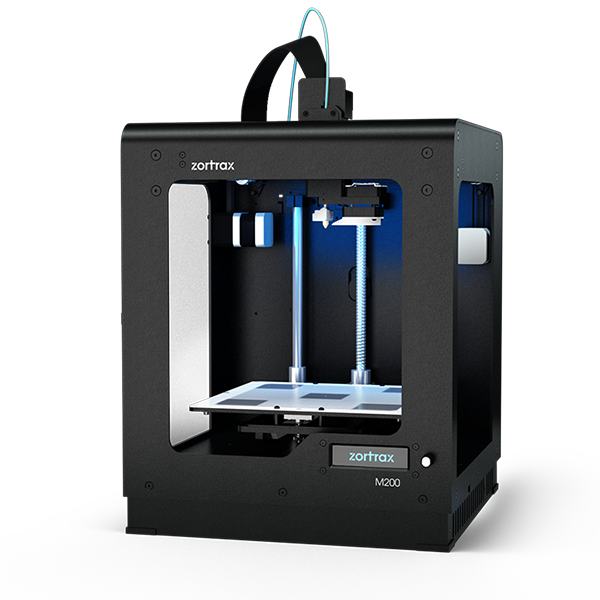
Enter: ViewSTL
Price: Free
Systems: Browser
#9: Netfabb Basic
some nice features that allow you to analyze, "repair" and edit STL files before moving on to the model cutting stage.
A good choice if you need more than just a slicer and want to be able to quickly fix STL files without having to learn programs like MeshLab or Meshmixer.
Don't let the 'Basic' in the name fool you, Netfabb Basic is actually a very powerful 3D printing tool. It's "basic" only in the sense that it doesn't cost €1,500 like Netfabb Professional!
Download: netfabb.de
Price: Free
Systems: PC, Mac, Linux
No. 10: Repetier
For advanced to prepare STL files for 3D printing
9002 the next level of 3D printer slicer software, but if you want to stay open source, you should look into Repetier. It is the great grandfather of 3D printing software and a favorite of the RepRap community. Today the program is moving by leaps and bounds from the level for beginners to advanced users.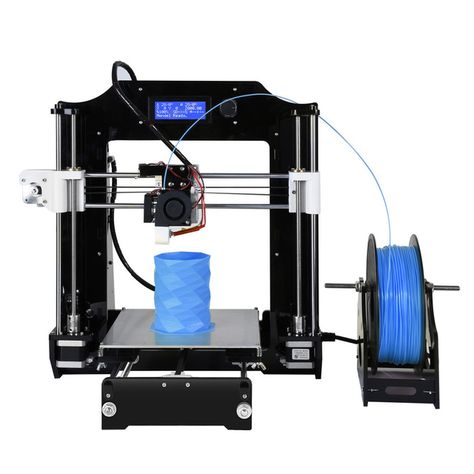 Packaged in an all-in-one configuration, it supports up to 16 extruders, multi-slicing via plug-ins, and virtually every fusing 3D printer on the market. Get ready to tinker!
Packaged in an all-in-one configuration, it supports up to 16 extruders, multi-slicing via plug-ins, and virtually every fusing 3D printer on the market. Get ready to tinker!
What's more, Repetier Host works remotely via Repetier Server, so that the 3D printer can be controlled via a browser, tablet or smartphone.
Download: Repetier
Price: Free
Systems: PC, Mac, Linux
#11: FreeCAD
The program is a great option for developing your design skills. More technically, this parametric 3D modeling program allows you to easily change the project by rolling back through the history of the model and editing the parameters.
Download: freecadweb.org
Price: Free
Systems: PC, Mac, Linux
#12: SketchUp
For beginners who want to create 3D printable models
SketchUp is the perfect combination of simplicity and - the perfect combination functionality, with a user-friendly interface and a relatively flat learning curve (i. e., as experience grows with the time spent), the ideal program for developing three-dimensional models.
e., as experience grows with the time spent), the ideal program for developing three-dimensional models.
The Make SketchUp version is free and will have everything you need for 3D modeling if you also download and install the free STL exporter. There is also a professional edition for architects, interior designers and engineers.
Download: sketchup.com
Price: Free (SketchUp Make), $695 (SketchUp Pro)
Systems: PC, Mac, Linux
#13: 3D-Tool Free Viewer
view and check STL files
3D-Tool Free Viewer is a sophisticated tool that, among other things, allows you to check the structural integrity and printability of your file. With the Cross-Section function, for example, you can look at the model from the inside and check the wall thickness. Very useful if you want to check your STL file for killer errors before printing.
Download: 3D-Tool
Price: Free
Systems: PC
#14: Meshfix
your model for errors.
Price: Free
Systems: Browser
#15: Simplify3D
For professionals to prepare STL files for 3D printing print. A flexible algorithm checks the model for problems, fixes them, shows a preview of the printing process (ideal for identifying potential problems), and then slices it.
This slicer offers the best infill pattern options in the competition. For models that require supports, Simplify3D will create the appropriate structures on its own and give you full control over their placement. For printers with a dual extruder, when printing with different materials, the Dual Extrusion wizard will help, as a result of which, for example, it will be easier to remove the dissolving filament.
Simplify3D supports 90% of today's commercially available desktop 3D printers and is compatible with Marlin, Sprinter, Repetier, XYZprinting, FlashForge, Sailfish and MakerBot firmware. Simplify3D can also be used to directly control the printer, but then the printer and computer must be connected to each other.
Download: simplify3d.com
Price: $149
Systems: PC, Mac, Linux
#16: Slic3r
source code, which has a reputation as a carrier of super new functionality, which you will not find anywhere else. The current version of the program is able to show the model from multiple angles, so that the user gets a better preview experience.
There's also an incredible 3D honeycomb infill, the first of its kind that can extend over multiple layers rather than repeating itself like a stamp. This significantly increases the strength of the internal filling of the model and the final printout.
Another option is direct integration with Octoprint. Once the files on the user's desktop are sliced, they can be directly uploaded to Octoprint with one click.
Download: Slic3r
Price: Free
Systems: PC, Mac, Linux
#17: Blender
For professionals who want to create 3D printable models
Blender is a popular computer-aided design (CAD) system with a steep learning curve.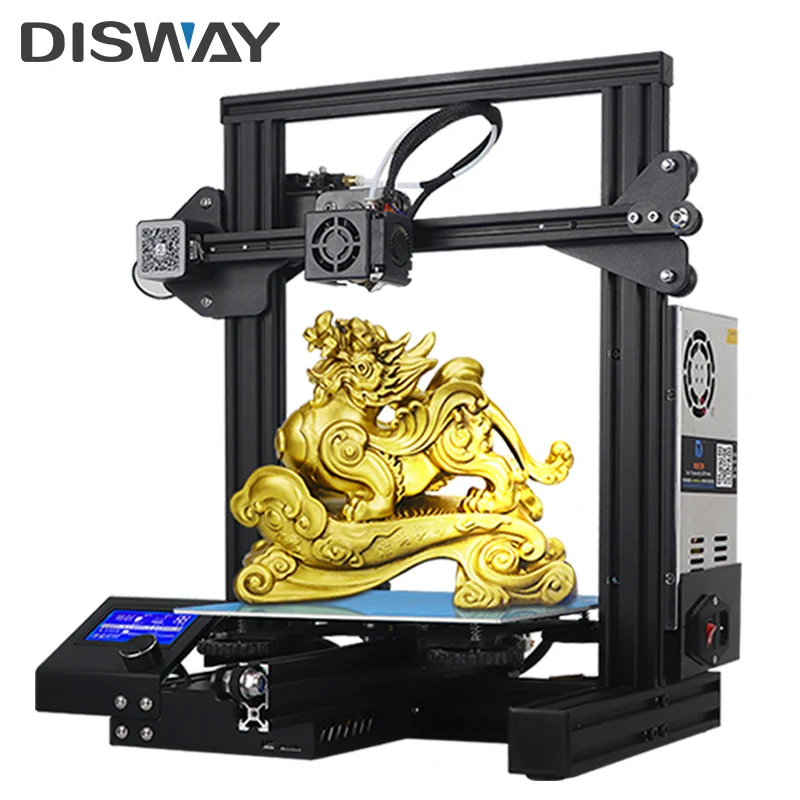 Not at all the best choice for beginners, but what you need if you are quite experienced and need something more complex for modeling and printing.
Not at all the best choice for beginners, but what you need if you are quite experienced and need something more complex for modeling and printing.
In short, Blender is one of the most powerful tools in existence. Its community is always ready to help, there are a lot of educational materials. It's also open source, so enthusiasts often write extensions to make it even better and more powerful.
Download: blender.org
Price: Free
Systems: PC, Mac, Linux
#18: MeshLab
For professionals to prepare STL files for 3D printing
MeshLab - advanced editor. It allows you to remove parts of a 3D model, merge two models into one, patch holes. If you need a program to modify models for 3D printing or some kind of "repair" work, MeshLab is the right choice.
Price: Free
Systems: PC, Mac, Linux
#19: Meshmixer
For professionals to prepare STL files for 3D printing files. It's especially good for identifying potential problems and fixing them automatically.






